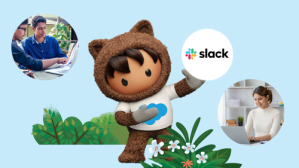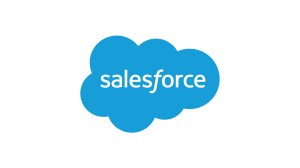Does Hybrid Work Affect Efficiency? Explore Myths & Facts!



Many businesses are often caught in a web of myths and misconceptions about hybrid work culture. This article debunks five common myths about remote/hybrid work.

Salesforce India
Hybrid work replaced remote work in 2022. Though it started as an unplanned global work experiment, the numbers still proved that the trend is here to stay. In the Talent Tech Outlook 2022, a study of around 100 C-suite and human capital leaders from four continents found that 82% of the respondents preferred working from home.
Closer home, Indian employees across industries have consistently voted for remote and hybrid work models. According to PwC’s India Workforce Hopes and Fears Survey 2022, around 81% of Indian workers believe they can work from home, and 31% of remote workers have switched to a hybrid model. More than 300 Indian businesses now have policies to allow remote work to continue even after the pandemic has abated.
So, is the hybrid or flexible working style the future of work? Enabling greater access to talent, improved employee experience, and lower cost of operations, remote working – and by extension, hybrid working – has evolved from a pandemic workaround to a modern necessity. But hybrid or remote working is more than hopping on a video conference – it requires organisations to establish a culture that helps workers to remain productive and achieve their potential irrespective of their work location. Organisations must need to build trust amongst employees, assure them that their efforts are valued, and contribute to a collaborative and facilitative work environment.
Myths about hybrid work model and how organisations can debunk them
The popularity ofhybrid woking is as much a mystery for employers as it is a risk of losing visibility for employees. But employees are ready to take that risk to achieve a better work-life balance and save avoidable travel time. For organisations still undecided on the matter, certain misconceptions abouthybrid working need to be debunked.
Here are a few myths, all busted.
1. Hybrid working causes loss of productivity due to distraction or procrastination
Fact: Studies have shown that people who work from home are often more productive and focused than their counterparts in the office. The popular “breakroom effect”, where employees are drawn away from their workstations to chat over coffee or join a celebration, does not apply to someone working from home. Remote workers avoid these disruptions and the time required to refocus after that.
However, if you are still worried about distractions hampering the quality of work of your remote employees, there are many tools and methods that you can provide remote team members to track and improve their productivity.
What you can do: Productivity-focused apps and tools help employees manage their work time smartly, with features like automated time-tracking, alerts, and monitoring. In Slack, for example, the keyword notifications feature instantly notifies team members when someone mentions them or a topic they need to monitor closely.Plus, team members can set up the “Do Not Disturb” mode to snoozing notifications temporarily when they need to concentrate. Many users set automatically-recurring DND hours to set a fixed focus time every day.
Organisations can also leverage Slack integrations to help team leaders gain visibility into the work done by remote team members. For instance, by integrating Slack with Github and Jira, IT managers can see the work progress of all their developers, regardless of location.
2. Remote collaboration is more challenging than in-person collaboration
Fact: While communicating virtually all the time can take some getting used to, deploying the right tools, processes, and virtual framework can enable frictionless communication and collaboration between employees.
What you can do: Digital solutions such as Slack have dedicated channels for collaboration that allow different types of communication. You can choose from department-specific channels, enterprise-wide groups, and direct messages, depending on the type of information and the audience it is meant for. You can also build a remote, self-service IT desk where remote employees can discover solutions, resolve common issues and even share feedback. This makes remote collaboration as fruitful and engaging as in-person collaboration.
Such remote collaboration techniques can also be complemented by in-person, enjoyable staff interactions, including regular off-sites, team scrums, and town hall meetings.
3. Hybrid work does little to inspire employees
Fact: Indeed, all those little things – from meeting a friend in the elevator to discussing anything under the sun with a colleague – do liven up workdays. Such work relationships are traditionally thought to inspire employees and spark creativity and inspiration. However, remote workers can also engage in free-flowing and spontaneous conversations (at a time of their choosing) using video and audio calls, 1-to-1 chats, team catch-ups, and more.
While brainstorming in person can open the door to lively discussions, a lack of inspiration is also seen due to not being able to brainstorm in person. In reality, virtual collaboration techniques give everyone a fair chance to contribute; while digital capabilities (like templates and whiteboard tools) make ideation and collaborative project development easy. Plus, remote work bridges distances without incurring additional costs, letting employees from any location contribute their diverse perspectives that can lead to new ideas and innovation.
What you can do: Leverage technology and tech-based solutions that empower team members to contribute ideas and opinions from anywhere.Online contests and cohorts to mobilise teams and channelise their creative energies is an easier version of launching an offline contest. Slack users often come up with creative and unique solutions for not just everyday affairs but also bigger issues concerning business.
4. Hybrid working is more vulnerable to cyberattacks
Fact: People on hybrid working models are no more vulnerable to cyberattacks than on-premise workers. With the help of strong cybersecurity tools, organisations can ensure enterprise-grade security for all employees. Secure solutions and vetted software programs allow IT teams to keep track of version control in remote computers. Additionally, proper security procedures such as establishing virtual private networks (VPN) and two-factor authentication help protect information from compromised access.
What you can do: A robust cybersecurity policy lets you secure communication and collaboration channels, ensuring protected messaging or file sharing. With features like identity protection and device management, data protection tools, information governance, and risk management capabilities, Slack is well-equipped to meet the security criteria of any organisation.
5. Remote teams can’t build meaningful connections
Fact: Not being able to build meaningful connections and friendships is a common argument against remote or distributed teams. While it is true that social interactions are more intuitive and spontaneous in the office, robust digital infrastructure makes it possible to bridge the gap and create a wider net of connections across geographies and time zones.
What you can do: A digital-first culture requires thoughtful, innovative activities to improve team dynamics and keep everyone engaged and connected. Virtual activities such as ice-breaker sessions, polls, and game hours can offer much-needed respite from work and allow cross-functional remote teams to interact and engage with each other in a fun manner.
Did you know that Slack offers several integrations that enable remote teams to bond and get to know each other? With Poll Everywhere for Slack, you can easily take polls and interact with your team without leaving the Slack app. Donut is a virtual engagement facilitator that offers conversation-starting tools such as Virtual Coffee and Watercooler. Virtual Coffee pairs up two team members for a 30-minute virtual coffee talk via Slack, phone, or video call. Watercooler is a channel specifically for talking about things other than work. Plus, you can set birthday reminders, incite curiosity by dropping riddles or start non-work-related Slack channels (pets, kids, and sports channels are universal favourites).
Don’t forget the occasional in-person meet-up though! Initiatives such as local coworking days, conferences, summits, holiday celebrations, and retreats let employees catch up with each other in person, travel to new places, and build stronger relationships with their teammates.
Hybrid work is here to stay
The modern workplace demands a shift in the way organisations and teams perceive work. A recent survey found that 73% of tech companies in India are opting for a mix of in-person and remote working models. So while working from home has its challenges, it can go hand-in-hand with increased productivity, flexibility, and employee engagement. To enable this, organisations mustbuild a technology-driven ecosystem that enables a strong work ethic, self-regulation, and effectiveness.
Slack helps in streamlining communication, enhancing collaboration, and matching people with the information they need on a single platform. Plus, it offers a variety of employee engagement tools that help businesses enhance the employee experience and ensure optimum productivity and satisfaction.























